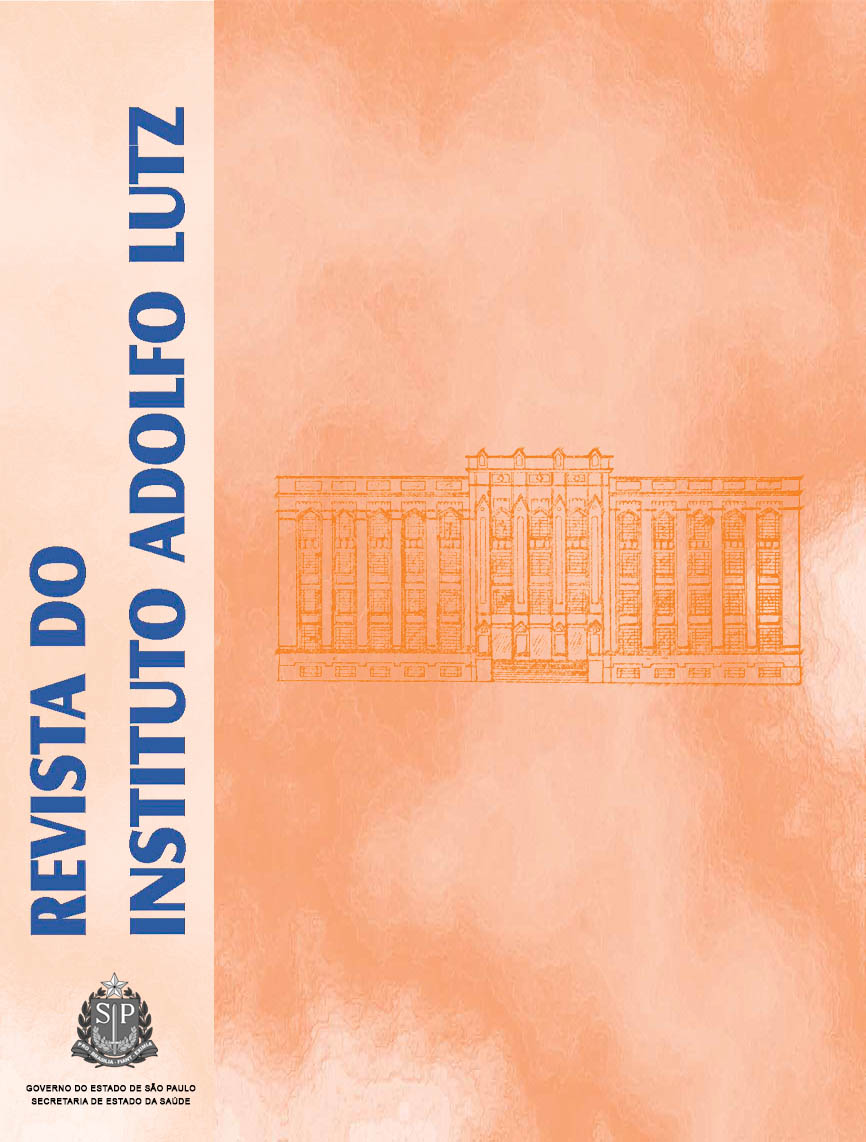Abstract
High incidences of infectious meningitis with high mortality index remains occurring in Brazil, despite of the prevention programs and significant advances in the microorganism identification technologies. The laboratorial examination of the cerebrospinal fluid (CSF) is fundamental for accomplishing an accurate diagnosis and for introducing adequate treatment. Microscopic examination, culture, and antigen detection have been used in laboratory routine. This study aimed to assess the techniques used in Sergipe in the period from 1997 to 2003 for infectious meningitis diagnosis. The 510 record sheets of patients with suspicion of meningitis, who had given entrace during that period in the Central Laboratory of Health Public - Instituto Parreiras Horta in the State of Sergipe, were analyzed. Analyzes on absolute frequencies of the tests used for infectious meningitis diagnosis was carried out. In the last years, are duction in frequency of cases confirmed by culture has perceived. This fact has also been noticed in other Brazilian laboratories. On the other hand, a substantial increase in the number of cases confirmed by bacterioscopy (Gram stain) has been observed. Efficient meningitis diagnosis provides significant clinical benefits for monitoring patients, introducing the antimicrobial therapy, and for disease evolution following-up.References
1. Ministério da Saúde. Guia de Vigilância Epidemiológica: meningites. Brasília/DF, 2002. 579-632.
2. Hyslop NE, Swartz MN. Bacterial meningitis. PostgradMed 1975; 58(3):120-8, 1975.
3. Lennette EH, Ballows A, Hausler WJ, Shadomy HJ. Manual of clinical microbiology. American Microbiology Society, 4Th edition, Washington DC, 1985. 1149p.
4. Geiseler PJ, Nelson KE, Levin S, Reddi KT, Moses VK. Community acquired purulent meningitis: a review of 1.316 cases during the antibiotic era, 1954-1976. Rev Infect Dis 1980; 2(5): 725-44.
5. La Scolea LJ Jr., Dryja D. Quantitation of bacteria incerebro spinal fluid and blood of children with meningitis and its diagnostic significance. J Clin Microbiol 1984;19(2): 187-90.
6. Jones RG. Bacterial meningitis. Part I Incidence and diagnosis. S Afr Med J. 1967; 41: 75-9.
7. Peltola H. Meningococcal disease: still with us. Rev Inst Dis 1994; 5: 71-91.
8. Virgi M. Meningococcal disease: epidemiology and pathogenesis trends. Microbiol 1983; 4: 466-70.
9. Kumar P, Verma IC. Antibiotic therapy for bacterial meningitis in children in developing coutries. Bul of theWHO 1993; 71: 183-8.
10. Stocco JM, Porfírio FMV, Carvalho VO, Nunes FF, Santos NNQ. Campos CEOP, Schimal MR, Kuschnaroff TM. Septicemia com púrpura por Haemophillus influenzae e sua semelhança com meningococcemia. In: XXVI Congresso da Sociedade Brasileira de Medicina Tropical, Natal. p. 196, 1990.
11. Mullis KB, Faloona FA, Specific synthesis of DNA in vitro viaa polymerase – catalysed. Meth Enzymol 1987; 155: 335-50.
12. Baethgen LF, Morales C, Weidlich L, Rios S, Knetzsch CI,Silva MS, Rossetti MLR, Zaha A. Direct-test PCR for detection of meningococcal DNA and its serogroup characterization: standardization and adaptation for use in a public healthlaboratory. J Med Microbiol 2003; 52: 793-9.
13. Bryant PA, Li HY, Zaia A, Griffith J, Hoog G, Curtis N, Carrapetis JR. Prospective study of a real-time PCR thatis highly sensitive, specific, and clinically useful fordiagnosis of meningococcal disease in children. J Clin Microbiol 2004; 42(7): 2219-26.
14. Pinner RW, Hassen RA, Powderly WG. Propescts for preveling cryptococosis in person infectedwith human immunodeficiency virus. Clin Infect Dis 1995; 21:103-7.
15. Powderly,WG. Recent advances in management ofcryptococcal meningitis in patients with AIDS. Clin Infect Dis 1996; 22(2): 119-23.
16. Kaczmarski EB, Fox AJ, Edwards-Jones V, Borrow, R, Guiver, M, Corless, CE. Simultaneous detection of Neisseria meningitidis, Haemophillus influenzae and Streptococcus pneumoniae in suspected cases of meningitis and septicemia using real time PCR. J Clin Microbiol 2001;39(4): 1553-8.

This work is licensed under a Creative Commons Attribution 4.0 International License.
Copyright (c) 2006 Instituto Adolfo Lutz Journal
